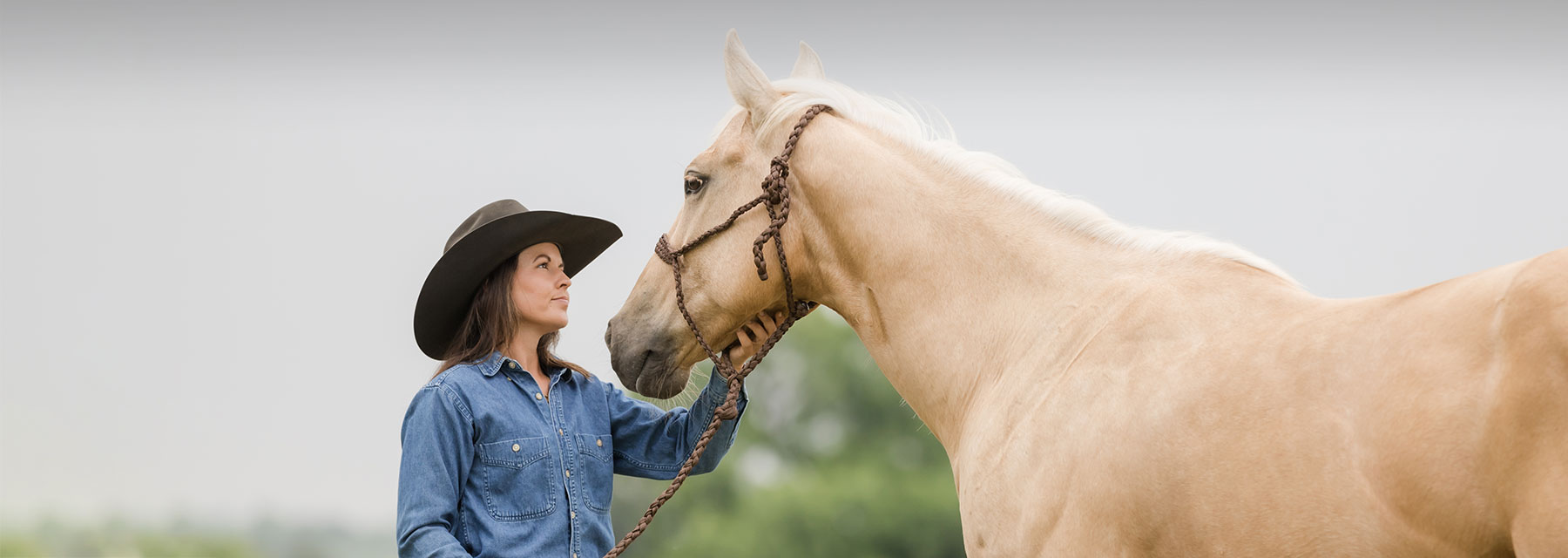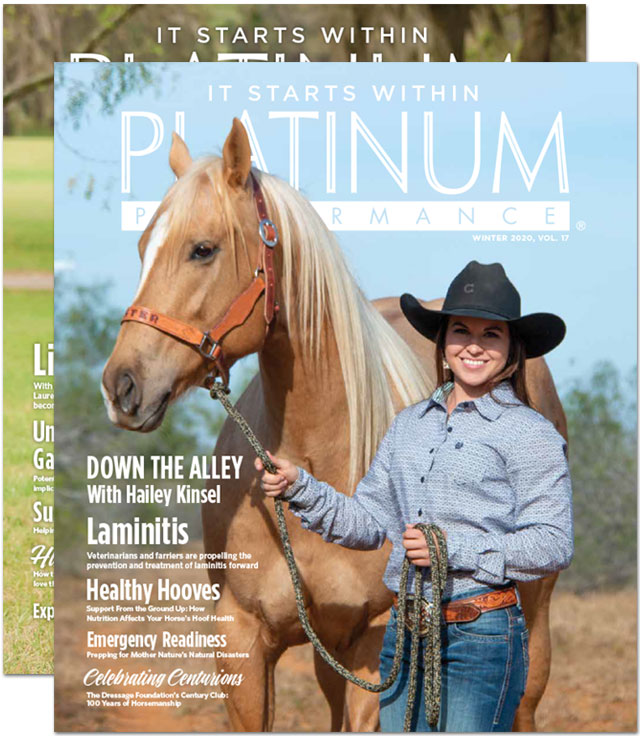Tackling the Behavior of Mares in Heat
Some horse owners say that if you earn the trust of a mare, she will try harder for you than any other animal. In a social world where “ISO geldings only” advertisements rule and only “non-mareish mares” need apply, those that have truly loved a mare will agree to disagree. People with true-blue mares know that it’s an honor to be chosen as “her person,” but one will likely have to put in the time. Mares have a ton of heart. They’re passionate. They’re special. And they often have hormone-related opinions throughout parts of the year.
Mares are seasonally polyestrous breeding animals with a cycle dependent on the length of daylight. In the Northern Hemisphere, mares will have a natural estrous cycle from late spring to early fall. The ovulatory season is when a mare is cycling and producing ovarian follicles, and receptive to the stallion for breeding on a regular, cyclical basis. Anestrus occurs in late fall through winter when the mare does not cycle and is not receptive to breeding. The ovaries are smaller and inactive due to hormonal changes induced by a shortened amount of daylight.
A filly will become sexually mature and start cycling between 1 and 2 years old. During the breeding season, she will have a series of cycles — about 21 days (+/- 3 days) in length — with alternating phases: estrus and diestrus. Estrus (in heat) averages about six days but can be longer or shorter depending on the mare. Diestrus is roughly 15 days of the three-week estrous cycle. Mares are typically non-receptive or actively reject a stallion during this time. Behaviorally, diestrus is often when owners notice their mare returns to acting “normal” for riding and handling.
Estrus is when a mare is ready to breed and receptive to the stallion. During this reproductive stage, a follicle develops and matures, culminating in ovulation — the release of the egg for fertilization — occurring 24 to 48 hours before the end of estrus. Conception rates are highest if the mare is bred 36 hours before and up to ovulation. Understanding estrus is extremely important to the reproductive industry as it must be accurately determined for the best chance of conception.
Mares in heat can have affected behavior, and individual mares can show more intense behavior changes than others. Common behaviors include heightened sensitivity, nervousness, excitability or irritability. Mares in heat may seem more distracted and neigh, or whinny, to other horses. Being in heat can be accompanied with ovarian pain. This can make her more sensitive and respond unpredictably when handling, grooming, tacking up or riding.
Natural treatments, including herbs and botanicals that support anti-inflammatory or anxiolytic effects, may support mares in heat. Many supplements marketed for mare health focus on calming benefits. Magnesium supplements may offer benefits particularly for tense, crampy muscles. Medical intervention including hormone treatments exist that regulate or even stop a mare’s estrous cycle.
Phases of the Cycle
Hormones control the estrous cycle. The hypothalamus, pituitary gland, ovaries and uterus produce hormones that are affected by external factors including daylight hours, temperature and nutrition.
- Estrous cycle: The entire reproductive cycle that runs approximately 21 days or from one ovulation to the next.
- Estrus: The in-heat stage of the cycle when the mare is receptive to the stallion, lasting about 6 days but can vary between four and 10 days depending on the individual.
- Diestrus: The time period in between estrus when the mare is not receptive to the stallion. This part of the cycle is about 15 days but can vary from 12 to 18 days.
- Anestrus: The complete absence of estrus during winter. Most mares will not show any signs of reproductive activity during this time.
The Estrous Cycle of the Mare
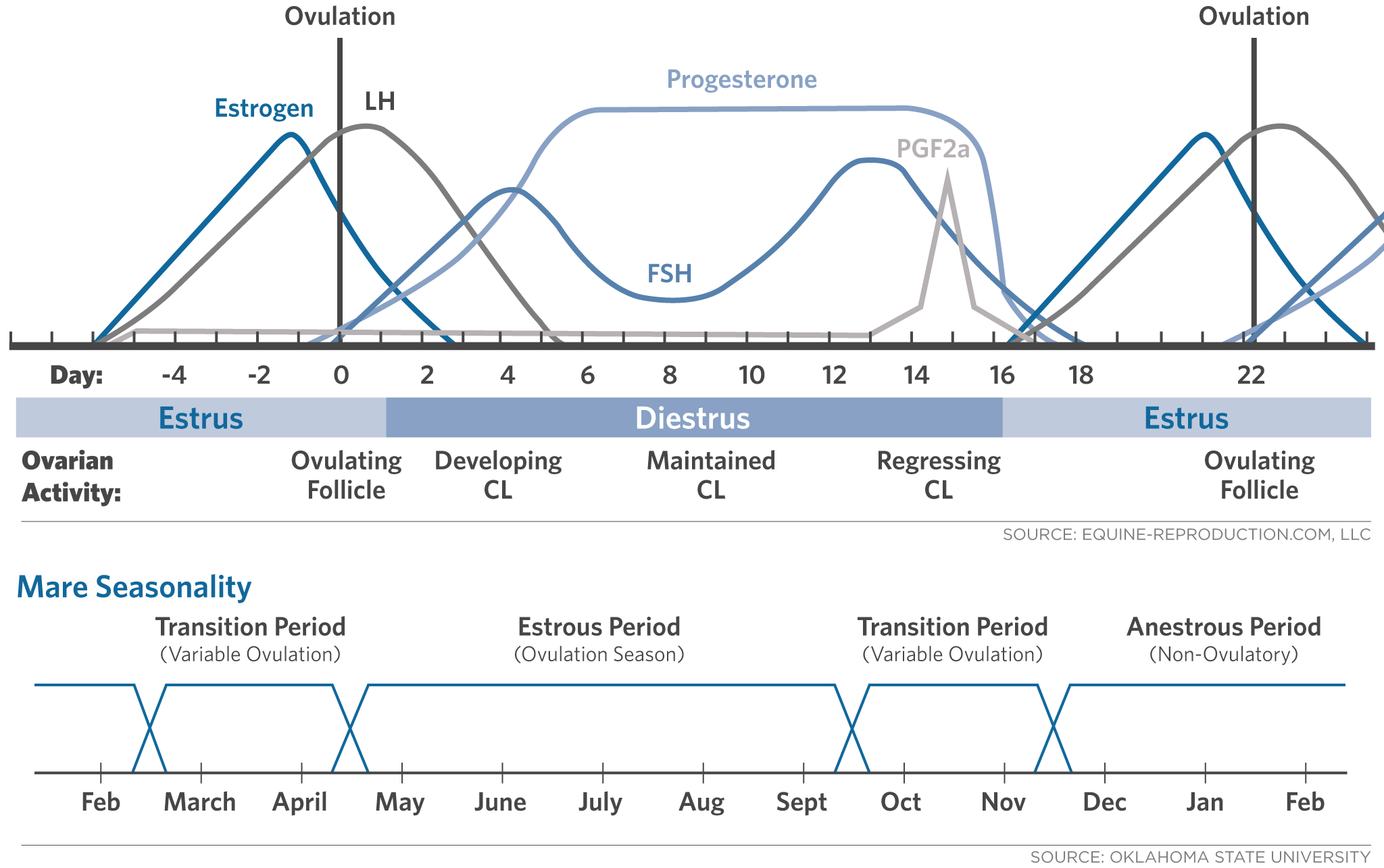
Troubleshooting Difficult Estrous Behavior
Modifications Can Help Keep Your Mare More Comfortable
Keep track of the mare’s behavior to see if it is cyclical. Note behavior on a calendar and determine if changes reoccur about every 21 days. If behaviors continue in winter, they are likely unrelated to estrus.
If the mare is reactive when she’s in heat, it may help to keep her away from stallions, and even geldings. If possible, try riding alone or with another mare rather than a group during estrus. If the mare is just difficult or uncomfortable, consider giving her a few days off or hand grazing instead of grooming or riding.
Medical options can control a mare’s cycle and help behavior issues. A veterinarian can help navigate options that are most appropriate for the individual mare. The most common method to control ovarian function is the daily administration of the oral progestin, altrenogest (Regu-Mate®). Injectable progesterone options are available that are given daily or weekly depending on the product. The hormone oxytocin can be administered as a daily intramuscular injection to regulate ovulation. Updated options of the “glass marble” intrauterine device are being used that include water-filled plastic balls or an alternative frameless, shatter-proof device. Both are highly effective at suppressing estrous behavior as well as a high retention rate and ease of administration. Anti-gonadotropin-releasing hormone vaccines and slow-release implants that down-regulate GnRH receptors have been used in other countries to suppress estrous behavior and ovulation but are not currently being used in the US. Lastly, an ovariectomy is not typically used just to control estrous behavior but may be used if other issues exist. While the removal of the ovaries can help with undesirable behavior, some mares may show persistent heat, since the suppressive effects of progesterone are removed.
If a mare’s behavior during estrus is severe — including difficult to handle, aggressive, hypersensitivity of the kidneys or back, or displaying lameness — a veterinarian should be contacted to diagnose underlying causes or to offer medical suggestions to suppress severe symptoms.
Signs & Symptoms of Estrus
Estrus is a normal and completely natural part of the reproductive cycle. Mares are individuals, and some may show bold behavioral changes while others may not show any changes at all. Some mares may only display overt signs of estrus when in the presence of a stallion. If a mare tends to be more challenging or sensitive one week out of three from spring through fall, her behavior is likely estrus related.
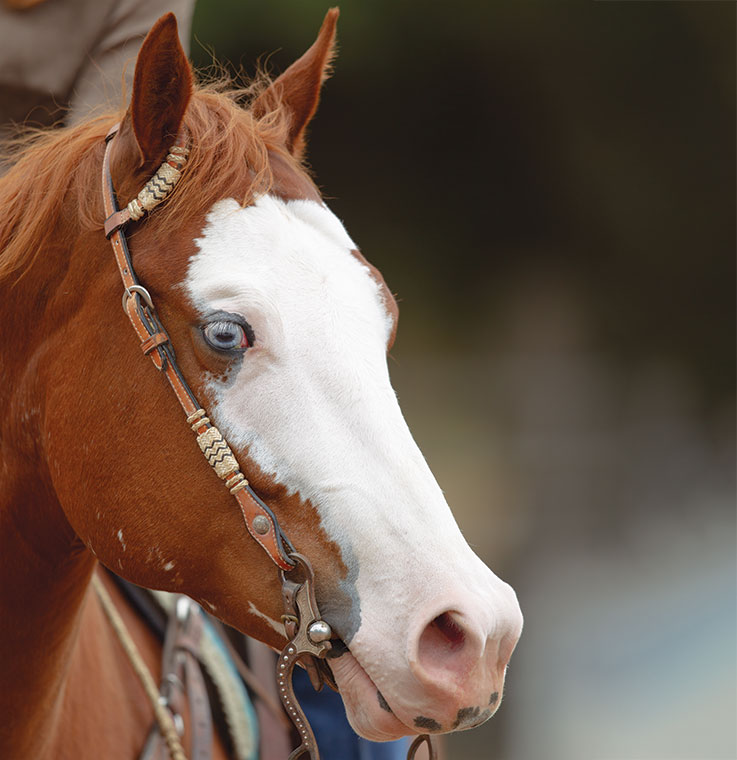
Signs & Symptoms of Estrus
Estrus is a normal and completely natural part of the reproductive cycle. Mares are individuals, and some may show bold behavioral changes while others may not show any changes at all. Some mares may only display overt signs of estrus when in the presence of a stallion. If a mare tends to be more challenging or sensitive one week out of three from spring through fall, her behavior is likely estrus related.
Common Signs of Estrus:
- Tail raising
- Excessive urination, often in small amounts
- Wide stance, squatting or “posturing” with the back legs and rounding the hindquarters
- Winking (opening and closing) of the vulva
- Clear or mucous discharge coming from the vulva
- Irritability
- Distracted, especially during work
- Restlessness
- Sensitive to touch
- Hyperactive or spooky
- Squealing
- Clinginess, buddy sour, neighing for other horses
- Aggression, biting or kicking
The Blame Game: When It’s Not Estrus
There are some physical issues that may cause behaviors mimicking a mare being in heat. These include: ovarian tumors, urinary tract or bladder infections and musculoskeletal pain. Ovarian tumors may overproduce steroid hormones that can cause variable signs such as suppression of normal estrous cycling. Production of testosterone may cause a mare to consistently show signs of estrus or stallion-like behavior, like aggression and biting or striking out at other horses. The mare may try to mount other mares, and some mares may even develop a cresty neck. If this type of behavior occurs, contact a veterinarian to discuss these issues.
Major Hormones of the Estrous Cycle
The estrous cycle is dependent on daylight hours. As daytime increases in the spring time, hormones secreted by the ovaries signal the end of anestrus and the restart of the estrous cycle. A very specific feedback system with close interactions between various hormones regulates the reproductive cycle.
Melatonin: As daylight increases with spring (or under artificial conditions), the pineal gland is triggered to block melatonin production.
Gonadotropin-releasing hormone (GnRH): The decrease of melatonin signals the release of GnRH from the hypothalamus in the midbrain tissues. Located at the base of the brain, the pituitary gland is stimulated by GnRH to produce follicle stimulating hormone and luteinizing hormone. These two hormones act on the ovaries to prepare an oocyte (egg) for ovulation.
Follicle stimulating hormones (FSH): A gonadotropic hormone that travels to the ovaries via the bloodstream where it stimulates the development of one or more ovarian follicles.
Luteinizing hormone (LH): A second gonadotropic hormone, LH supports maturation and ovulation of the developing, egg-bearing follicle.
Estrogen: The developing follicle secretes estrogen that is released into the bloodstream. Different forms of estrogen exist in the mare depending on the phase of the cycle. Estrogen has several effects including the stimulation of estrous activity, relaxing the cervix and allowing sperm to enter the uterus, stimulating smooth muscles in the reproductive tract for transport of sperm, egg and more. When blood estrogen reaches a certain threshold, the pituitary gland triggers the release of LH. This surge causes the follicle on the ovary to rupture, thus causing ovulation. Estrogen affects behavioral centers in the brain. With the growth of the follicle around the maturing oocyte, more estrogen is produced alerting the mare’s brain that she needs to be bred in the next few days. This hormonal feedback causes the classic behavioral changes of a mare “being in heat.” Ovariectomized mares, in which one or both of the ovaries have been removed, can have relatively high levels of estrogen, thought to be produced by the adrenal cortex, which may cause her to show persistent heat behavior.
Testosterone: Testosterone can lead to aggressive behaviors in normal mares. Blood testosterone levels increase along with estrogen as mares come into heat, peaking around the time of ovulation. Testosterone can also be produced by granulosa-theca cell tumors — the most common equine ovarian tumor — which can sometimes lead to significant aggression.
Progesterone: The ruptured blood-filled follicle luteinizes to develop the corpus luteum, which produces progesterone. This key hormone responsible for maintaining a uterine environment conducive to fetal development, inhibits the secretion of LH and FSH. Via progesterone, the mare will not display estrus and not be receptive to the stallion. Progesterone is responsible for maintaining the first 70 days of pregnancy, after which dihydroprogesterone (DHP), produced by the placenta, maintains pregnancy to term. Synthetic progesterone, such as altrenogest, is often used and is very important in artificially manipulating the estrous cycle. It is used to suppress estrus in mares, particularly performance horses, and to synchronize estrous cycles for breeding purposes.
Prostaglandin: If there is no embryo present, prostaglandin is released from the inner layer of the uterus (endometrium), causing a regression of the corpus luteum and reducing progesterone levels. By removing the inhibition of progesterone, FSH rises and starts the cycle starts over again.
Magnesium for Mares
Magnesium supplementation may help relax tense, tight muscles. Magnesium is heavily involved in the nervous system, and low-magnesium levels may result in nerve excitability and hypersensitivity. Supplemental magnesium may support neuromuscular and behavioral sensitivities. Magnesium helps calm the nervous system by stabilizing nerve-cell membranes, regulating minerals involved in nerve transmissions and promoting serotonin production. Serotonin is a major mood hormone charged with feelings of well-being and is a cofactor for gamma amniobutyric acid (GABA), a primary neurotransmitter that inhibits nervous system activity and supports brain relaxation. Magnesium supplementation in humans is documented to have calming effects on a variety of brain-receptor types. It is often used as part of a holistic approach to help maintain normal behavior. Magnesium sulfate delivered intravenously to horses has been a historically effective way to maintain calmness during stress. Several factors are involved in supporting relaxed behavior in mares not the least of which is their basic personality. Magnesium supplements may positively influence behavior in some horses, according to anecdotal evidence in a 2015 equine study by Australian researchers at Charles Sturt University. For nervous, anxious or excitable mares, a surprisingly high number respond quickly to filling in simple nutritional gaps with basic, essential nutrients like magnesium. And for edgy estrous behavior, it may provide noticeable benefits to spookiness and overreaction to sound, movement or touch. Horses that respond favorably to supplements were possibly deficient in magnesium and, once receiving optimal levels, are able to have normal muscular and neurological functioning that may be exhibited as a calmer attitude.
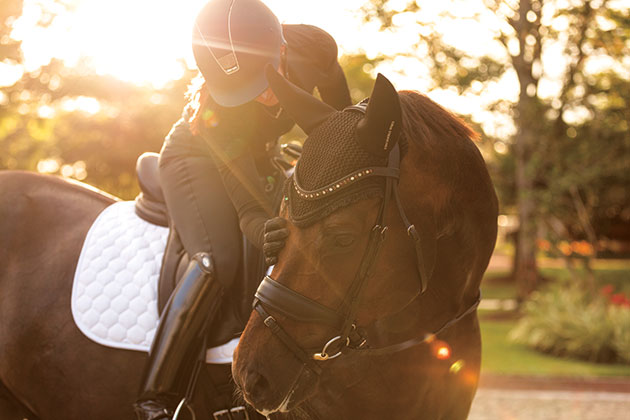
Magnesium helps calm the nervous system by stabilizing nerve-cell membranes, regulating minerals involved in nerve transmissions and promoting serotonin production.
Magnesium helps calm the nervous system by stabilizing nerve-cell membranes, regulating minerals involved in nerve transmissions and promoting serotonin production.
Some Symptoms of Magnesium Deficiency Overlap With Estrous Behavior
- Tight muscles or tying up
- Reluctance to work
- Nervousness or excitability
- Irritability
- Muscle soreness
- Inattention
- Sore back
